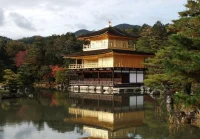The Best Places to Study in Japan - 11 Cities, Not Just Tokyo!

To foreign students who are considering studying in Japan, have you chosen a city to study in yet? Although large cities such as Tokyo and Osaka are particularly popular among international students, there are many other attractive candidates for study in Japan.
When selecting a study abroad destination, the most important thing is to find an environment that suits you. In this article, we pick up 11 recommended destinations for those who are considering studying in Japan. We will explain in detail the characteristics and attractions of each city, as well as their track record in accepting international students, so please be sure to refer to this article.
In the latter half of the article, we will also provide three key points for selecting a study abroad destination. The cities we recommend will vary depending on whether you are looking for convenience of living, a suitable environment for improving your Japanese, or to keep costs down.
We hope that you will find the best study abroad destination that meets your needs in one of these 11 cities!
▼Goandup Picks Click here for recommended articles!
- Required before studying abroad! Goandup Nihongo+, an online Japanese language learning service
- This page introduces services for foreigners who wish to study in Japan or improve their Japanese language skills to learn Japanese online.
- Goandup Salon" community for foreigners living in Japan
- We introduce an online community where foreigners living in Japan can exchange information and interact with each other to support their life in Japan.
- Goandup Study" supports foreigners who want to study in Japan.
- This section introduces study abroad support services that provide comprehensive support to foreigners who wish to study in Japan, from preparation for study abroad to living in Japan.
- Where can I buy a prepaid SIM in Japan? Recommended SIM cards for foreigners are also introduced.
- How to purchase a prepaid SIM and suitable SIM cards for foreigners.
- The Complete Guide to Pocket Wi-Fi in Japan for Foreigners!
- We introduce how to select and recommend pocket Wi-Fi products that can be used conveniently in Japan.
- The Complete Guide to Finding a Job in Japan! Finding a job, changing jobs, and part-time work for foreigners
- This site provides foreigners who want to work in Japan with comprehensive information on how to find a job, recommended job sites, and other information necessary to find a job.
List of recommended cities to study in Japan

Let's take a closer look at 11 cities that are recommended as destinations for studying in Japan. For each city - Tokyo, Osaka, Yokohama, Nagoya, Kyoto, Kobe, Fukuoka, Hiroshima, Sendai, Sapporo, and Okinawa - we will introduce plenty of reasons and features that make them attractive to international students.
In addition to an overview of each city, the reasons for its popularity as a study abroad destination, the quality of its educational institutions, and its record of accepting international students, each city will also be described in terms of the delights of student life, such as gourmet food and events. We are sure that you will find a study abroad destination that matches your interests and concerns.
1. Tokyo
Tokyo is the capital of Japan and the center of politics, economy, and culture. With many universities, Japanese language schools, vocational schools, and other educational institutions, it is a city with many options for international students. In addition, Tokyo is a very internationalized city, with services available in English, making it easy for international students who do not speak much Japanese to live in the city.
The well-developed transportation network provides easy access to Tokyo and neighboring prefectures. In addition, there are many part-time jobs available, so students can earn money for tuition and living expenses. However, rent and prices are among the highest in Japan, so this should be kept in mind.
Tokyo has a foreign population of approximately 630,000, the largest of any municipality in Japan.
If you would like to know more about share houses and rental properties in Tokyo, please contact us at5 foreigner friendly share houses in Tokyo - cheap houses can be found!Check out the "What's New?
2. Osaka
Osaka is the largest city in the Kansai region and is known as the "City of Laughter," where comedy and entertainment thrive. Osaka is home to many universities and vocational schools, as well as many international students.
Osaka's appeal lies in its rich culinary culture. You can enjoy Osaka's famous gourmet specialties such as takoyaki, okonomiyaki, and udon noodles. Osaka is also home to popular theme parks such as Universal Studios Japan (USJ), which offers a wide variety of entertainment.
The people of Osaka are kind and cheerful, and easy to communicate with. It is an ideal environment for foreign students to learn about Japanese culture and customs. Osaka has a foreign population of approximately 290,000, making it the third largest after Tokyo and Aichi Prefecture.
To learn more about share houses in Osaka, please visit the "5 foreigner-friendly share houses in Osaka!Check out the "What's New?
3. Yokohama
Yokohama is the central city of Kanagawa Prefecture, located next to Tokyo, and has a history as an international port city. Yokohama is home to many foreign residents and is characterized by its international flavor. There are also many tourist attractions such as Chinatown and the exotic Yamate area.
Yokohama is home to many universities and vocational schools, providing a favorable learning environment for international students. Yokohama also offers easy access to Tokyo, making it possible for international students to attend schools in the central part of the city.
Yokohama's appeal lies in the coexistence of urban convenience and abundant nature. While the city center is lined with skyscrapers, the Minatomirai area has vast parks and green spaces where you can relax and enjoy your time. Yokohama has a foreign population of approximately 110,000, one of the highest among all municipalities in Japan.
For more information about share house information and rent rates in Yokohama, please visit "5 foreigner-friendly share houses in Yokohama! Rent rates also explained!Please refer to the "See
4. Nagoya
Nagoya is the largest city in the Chubu region and is known as an industrial city with a thriving manufacturing industry. Nagoya is also a treasure trove of local delicacies known as "Nagoya meshi" (Nagoya food). Visitors can enjoy delicious dishes unique to Nagoya, such as miso katsu (pork cutlet), hitsu-mabushi (fried eel on rice), and kishimen (flat noodles).
Nagoya is home to many universities and Japanese language schools, including Nagoya University, and many international students. The urban area is also characterized by large shopping centers and entertainment facilities, making it a very convenient place to live.
The people of Nagoya are known for their diligence and seriousness, and they warmly welcome international students. Learning the Nagoya dialect will be an interesting experience. Nagoya has a foreign population of approximately 90,000, the largest in the Tokai region. The total foreign population of Aichi Prefecture, including Nagoya City, is approximately 280,000, making it the second largest in Japan after Tokyo.
If you are looking for information on share houses in Nagoya, please contact us atRecommended 6 foreigner friendly share houses in Nagoya!Please refer to the "See
5. Kyoto
Kyoto is the ancient capital of Japan and is home to numerous temples, shrines, and historical buildings. The streets of Kyoto evoke a sense of traditional Japanese beauty and provide a valuable opportunity for international students to experience Japanese culture firsthand.
Kyoto is home to a number of prestigious universities, including Kyoto University, and is known as a center of academic research. There are also abundant opportunities to experience traditional Japanese culture such as tea ceremony, flower arrangement, and maiko (apprentice geisha).
The charm of Kyoto lies in the harmony between the atmosphere of old Japan and modern conveniences. While traditional machiya-style buildings stand side by side, there are also large shopping centers and office districts, so living in Kyoto is not inconvenient. Kyoto's foreign population is approximately 70,000, and many international students study here.
If you are looking for information on share houses in Kyoto, please contact us at5 foreigner-friendly share houses in Kyoto!Please refer to the "See
6. Kobe
Kobe is the central city of Hyogo Prefecture and one of the leading port cities in western Japan. Kobe has long been active in foreign trade, and its streets are characterized by an exotic atmosphere. Spots such as Kitano Ijinkan-gai and Mosaic Square are popular for their exotic atmosphere.
Kobe is home to many universities and vocational schools, including Kobe University and Kobe Design University. There are also many schools in the fields of fashion and design, and the city is attracting attention as a place for creative learning.
Kobe's appeal is its stylish and sophisticated city atmosphere. Areas such as Harborland and the Old Settlement are lined with fashionable cafes and stores, and are places of relaxation for international students. The city also offers beautiful nature and scenery, such as Mt. Rokko and the Akashi Kaikyo Bridge. Kobe is known as a multinational city with a foreign population of approximately 53,000.
For more information about share houses and rent rates in Kobe, please see "5 foreigner-friendly share houses in Kobe! Rent rates in Kobe are also explained.Check out the "What's New?
7. Fukuoka
Fukuoka is the central city of the Kyushu region, and its geographical advantage in proximity to Asia makes it a city where international business and exchange thrive. Fukuoka is home to many universities and vocational schools, including Kyushu University, as well as many international students.
Fukuoka's appeal lies in its mild climate, abundant nature, and delicious food. Fukuoka has a pleasant climate throughout the year and a beautiful coastline near the city. Another attraction of Fukuoka is its gourmet food, such as ramen noodles and mentaiko (cod roe).
The people of Fukuoka are kind, cheerful, and warmly welcome international students. Learning the dialect, Hakata-ben, will be an interesting experience. Fukuoka's foreign population is approximately 93,000, with a particularly large number of foreign students from Asia.
To learn more about share houses in Fukuoka, please visit the "Convenient, inexpensive and easy to live in! 5 foreigner-friendly share houses in FukuokaCheck out the "What's New?
8. Hiroshima
Hiroshima is a central city in the Chugoku region and is known as a city of peace, having experienced the tragedy of the atomic bombing. There are many facilities where visitors can learn about peace, including Hiroshima Peace Memorial Park and the Atomic Bomb Dome.
Hiroshima is home to many universities and vocational schools, including Hiroshima University, as well as many international students. Another attraction of Hiroshima is its location facing the Seto Inland Sea, where one can enjoy beautiful natural scenery.
The people of Hiroshima are known for their kindness and gentle nature, and they warmly welcome international students. The city also offers an abundance of delicious gourmet foods such as Hiroshima-style okonomiyaki and oysters.
Hiroshima has a foreign population of approximately 60,000, and many international students are studying about peace. It is a good destination for those interested in history and peace.
If you are looking for a share house in Hiroshima, please contact us atI want to find a share house in Hiroshima! 5 share houses suitable for foreignersPlease refer to the "See
9. Sendai
Sendai is the largest city in the Tohoku region, also known as "Mori-no-Miyako," or "City of Trees," and is rich in greenery. Sendai is also known as a center of academic research, with many universities and technical colleges, including Tohoku University.
Sendai's appeal lies in its abundant nature and delicious food. Sendai has a lot of greenery even in the center of the city, making it a place of relaxation for its citizens. In addition, you can enjoy Sendai's unique gourmet foods such as beef tongue and Zunda rice cakes.
The people of Sendai are known for their kindness and calm nature, and they warmly welcome international students. Learning the dialect unique to the Tohoku region will be an interesting experience.
Sendai has a foreign population of approximately 25,000, the largest in the Tohoku region. This is a recommended destination for those who wish to study in an environment rich in nature.
10. Sapporo
Sapporo is the central city of Hokkaido and is surrounded by magnificent nature. Sapporo is home to many universities and vocational schools, including Hokkaido University, and many international students.
Sapporo's appeal lies in its beautiful nature and delicious food. Sapporo offers a lush green environment, including Odori Park and the sprawling campus of Hokkaido University. You can also enjoy delicious gourmet foods unique to Hokkaido, such as ramen noodles and seafood.
Sapporo is covered with snow in winter, and events such as the Snow Festival are held in the city. This is a recommended destination for those who want to enjoy winter sports.
The people of Sapporo are known for their kindness and gentle nature, and they warmly welcome international students. Learning the Hokkaido dialect will be an interesting experience. The foreign population of Sapporo is approximately 17,000, making it a popular destination for those who wish to study in a rich natural environment.
For more information about share houses, rent rates, and local characteristics in Sapporo, please visit "5 share houses for foreigners in Sapporo, Hokkaido! Explanation of rent rates and characteristics of the area.Please refer to the "See
11. okinawa
Okinawa is the collective name for the southernmost islands of Japan, an area with beautiful beaches and a unique culture. Okinawa is home to universities and vocational schools, including the University of the Ryukyus, as well as international students.
The charm of Okinawa lies in its mild climate, beautiful ocean, and unique culture. Okinawa is warm all year round and has many beautiful beaches. You can also experience Ryukyuan culture and Okinawan cuisine, which are unique in Japan.
Okinawans are known for their cheerful and open nature, and they warmly welcome international students. Learning the Okinawan dialect can be an interesting experience.
Okinawa has a foreign population of about 23,000 and is a popular resort area. It is a recommended destination for those who want to study in a relaxed atmosphere while enjoying nature.
If you would like to know more about share house information in Okinawa, please contact us at "3 share houses in Okinawa where foreigners can live - recommended for finding cheap rooms!Check out the "What's New?
Reference:Statistics on Foreign Residents in Japan June 2023 | General Contact for Government Statistics
Three points to consider when choosing a study abroad destination

When choosing a place to study in Japan, it is important to find the right environment for you. Here are three points to consider when choosing a place to study in Japan.
If you are looking for convenience of living, major cities are recommended|Tokyo, Osaka, Yokohama, etc.
Major cities such as Tokyo, Osaka, and Yokohama have well-developed transportation networks and are very convenient for daily life. Large shopping centers and entertainment facilities are available in the city centers, making daily life comfortable.
Another attraction is that there are many universities, Japanese language schools, and vocational schools in major cities, so students have a wide choice of schools to choose from. There are also many part-time jobs available so that you can earn money for tuition and living expenses.
However, rent and prices tend to be higher in major cities, so this should be kept in mind.
If you want to have more opportunities to use Japanese, I recommend big cities in the regions|Fukuoka, Sendai, Sapporo, etc.
In major regional cities outside of Tokyo and Osaka, such as Fukuoka, Sendai, and Sapporo, the number of foreigners is relatively small, so you will have more opportunities to communicate with Japanese people. Since you will be using Japanese more frequently, you can say that you will naturally improve your Japanese faster.
In addition, in regional cities, there are dialects unique to the area, and you can learn Japanese that is different from the standard language. By understanding dialects, you will be able to learn more about Japanese culture.
One of the attractions of regional cities is that the cost of living is not as high as in the cities. This is recommended for those who wish to effectively improve their Japanese language skills while keeping living costs low.
Choosing a city outside of Tokyo makes it easier to keep costs down because rents are lower.
When choosing a place to study abroad, the cost of accommodation is an important factor to consider. In particular, rent varies greatly from region to region, and there is a large gap in rent prices between Tokyo and regional cities.
For example, the average rent for a studio apartment in Tokyo is about 70,000 yen, but in Fukuoka City and Sendai City, the rent is much lower at around 40,000 to 50,000 yen.
The cost of living, including food and transportation, also tends to be lower in regional cities than in Tokyo. Those who wish to reduce the cost of studying abroad can expect to save a considerable amount of money by choosing a city other than Tokyo.
However, there are fewer part-time job opportunities in regional cities than in cities, and hourly wages for part-time work tend to be lower than in large cities. However, the cost of living itself is low in regional cities, so it is easy to maintain a lifestyle even with a low part-time income.
For a detailed comparison of rent prices by region in Japan, please see "Which prefectures have the cheapest rent in Japan? Compare rent prices by regionCheck out the "What's New?
For those of you who want to further your studies at a Japanese language school

The Japanese language attracts attention from around the world for its rich expressiveness and profound culture. From movies, music, and literature to everyday conversation, learning Japanese is not only a way to acquire a new language, but also a gateway to a deeper cultural understanding and a broader perspective.
For those of you who want to study Japanese more seriously, enter higher education in Japan, or find a job in Japan, taking your Japanese language skills to the next level is the first step in turning your dreams into reality. There are approximately 700 Japanese language schools in Japan with various characteristics, but it is not easy to select the best school for you.
Therefore, we will do our best to help you choose the perfect Japanese language school to realize your goals and dreams! If you have any questions or concerns about Japanese language schools, please feel free to contact us using the inquiry form below.
We will provide you with the best support to meet your Japanese language learning goals. We hope that our support will make your Japanese language study more fulfilling and fruitful.
summary
We have introduced 11 cities, including Tokyo, as destinations for studying in Japan. Each city has its own unique characteristics and is full of points to help you enjoy your life as a foreign student in Japan.
While large cities such as Tokyo and Osaka offer greater convenience and entertainment, rents are higher.
On the other hand, in regional cities such as Fukuoka, Sendai, and Sapporo, you can expect to improve your Japanese since you will be communicating with Japanese people more often. Rent is also inexpensive, so it is recommended for those who want to keep costs down.
When choosing a study abroad destination, it is important to select the most suitable city, taking into consideration your objectives, budget, and field of interest.
There are many cities in various parts of Japan with various attractions, so please try to find a study abroad destination that suits you best. You are sure to have a wonderful study abroad experience!
If you are looking for a part-time job while studying abroad, please also refer to the following articles.
[8 Part-time Jobs in Japan for International Students and Essential Knowledge for Working Safely]






